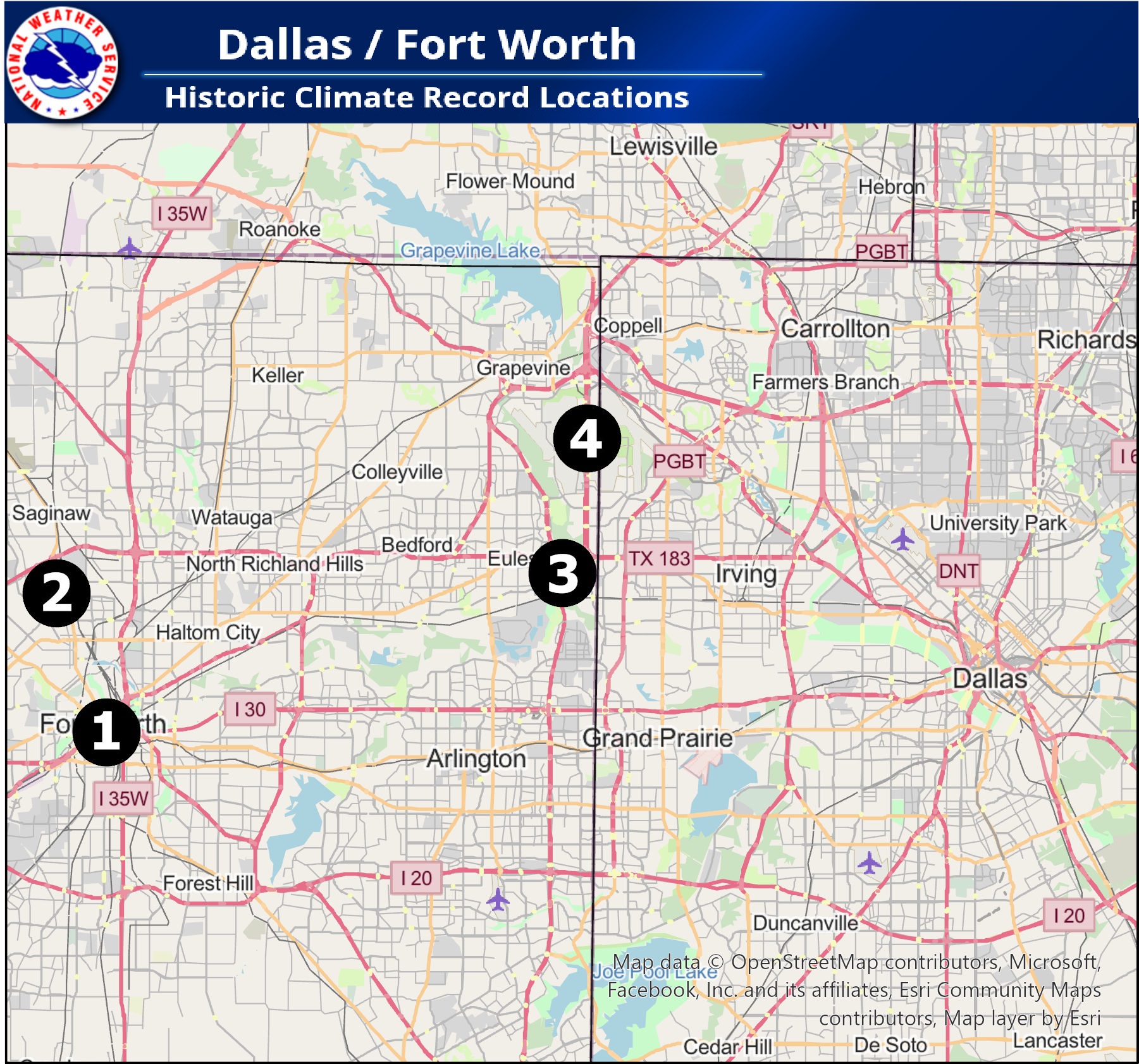The Climate of Dallas/Fort Worth
The Dallas/Fort Worth Metroplex is located in North Central Texas. The settlement of Dallas was founded in 1841, and the establishment of the military outpost of Fort Worth followed in 1849. The Weather Bureau opened an office in downtown Fort Worth in 1898, from which the continuous Dallas/Fort Worth climate record began. The combined urban area has become one of the most populous metropolitan areas in the country.
Within the southern reaches of the Great Plains, the region is a mixture of prairie and oak woodlands though much of the natural landscape has been overtaken by urbanization and agricultural land use. Rolling hills range in elevation from around 500 feet to more than 800 feet. Numerous tributaries of the Trinity River converge in the area, becoming one waterway departing Dallas for the Gulf of America, which is nearly 300 miles to the southeast. The river is controlled by a network of dams and levees. Lake Grapevine, one of many manmade reservoirs in the area, lies a few miles northwest of DFW Airport. The west-to-east oriented floodplain of the Trinity River is a few miles south of the airfield.
The climate of Dallas/Fort Worth is humid subtropical with hot summers. It is also continental, characterized by a wide annual temperature range. Precipitation varies considerably, annual values ranging from less than 20 inches to more than 50 inches. The precipitation is also unevenly distributed throughout the year, typically favoring a bimodal distribution of wet spring/fall and dry summer/winter. Although the average freeze-free period runs from March to November, the actual growing seasons are more closely tied to the rainier periods of spring and fall, with dormancy dominating summer and winter.
Winters are generally mild, but the season features considerable temperature variability. Periodic cold fronts bring usually brief spells of below normal temperatures. A warming trend usually follows a bout of cold weather, typically culminating before the next cold front arrives. Increasing urbanization has reduced the number of freezes at DFW Airport compared to suburban and rural areas on the outer portions of the Metroplex. Although winter is the cloudiest season, less precipitation occurs than during the adjacent seasons of fall and spring. Brief precipitation often accompanies frontal passages, but more prolonged periods of rain and drizzle can occur when cold air is in place. While infrequent, wintry precipitation occurs every winter, but many seasons conclude with little to no measurable snowfall.
Maritime tropical air masses are difficult to dislodge during the summer, and temperatures vary little as a result. During the peak summer months of July and August, also the sunniest months of the year, daytime temperatures are consistently in the 90s, often reaching or exceeding 100 degrees. Gulf moisture maintains stifling humidity, and overnight temperatures occasionally fail to fall below 80 degrees. Brief afternoon or evening thunderstorms account for the bulk of the limited rainfall during the summer, usually occurring on days that are otherwise sunny and hot. Impacts from tropical systems are quite infrequent and generally limited to unusually cloudy/rainy periods.
The transition seasons of spring and fall are typically the wettest periods of the year, but the bulk of the rainfall is associated with thunderstorms, and extended periods of pleasant weather still occur. The frequency of thunderstorms and associated severe weather peaks during the spring. Large hail, damaging winds, flooding, and tornadoes occur nearly every year in the Dallas/Fort Worth Metroplex, but a specific location is unlikely to experience all of these events every year.
While the climate record for Dallas/Fort Worth is considered continuous, data are from the following locations:
| 1 | 1898-1940 | Downtown Fort Worth |
| 2 | 1940-1953 | Fort Worth Meacham Field |
| 3 | 1953-1974 | Amon Carter Field (1953-1960) Greater Southwest International Airport (1960-1974) |
| 4 | 1974-present | Dallas/Fort Worth Regional Airport (1974-1985) Dallas/Fort Worth International Airport (1985-present) |
